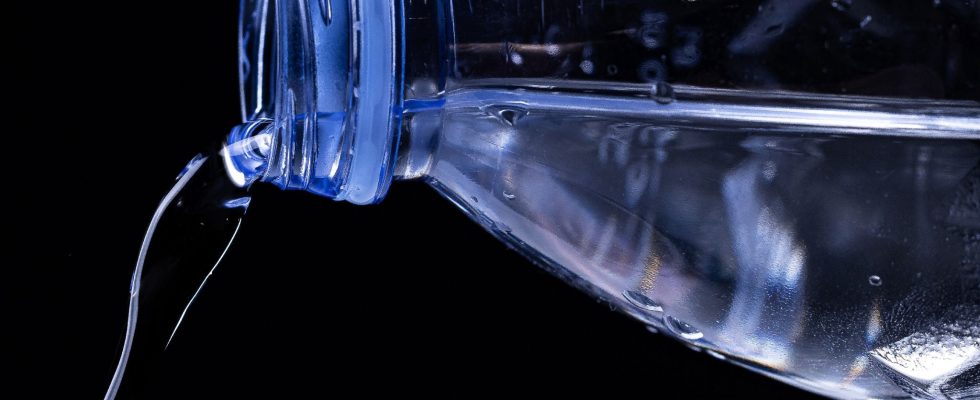New alert on bottled water. “Widespread” contamination. A confidential note from the national agency for food, environmental and occupational health safety (ANSES), submitted to the Ministry of Health in October 2023, concluded that the “sanitary quality” of finished products “n ‘is not guaranteed.’ The document, the content of which was revealed by Le Monde and France Info, singles out two French industrial sites of the Nestlé group: that of Vosges (Vittel, Contrex, Hépar) and that of Gars (Perrier). In these two places, the water is degraded at the source.
The conditions of confidence are considered insufficient concerning “the quality of the mixtures put in place in the production sectors of the different natural mineral waters”. An assessment which justifies, according to ANSES, the establishment of a “reinforced surveillance plan” allowing increased vigilance on “the virological health risk”. Two elements are particularly highlighted by the agency: the “a priori transient” presence of contamination “of fecal origin in certain resources”, and the generalized presence of micropollutants, some of which can be “permanent in certain drillings”. Should the alert from health authorities alarm consumers? Elements of response with Christelle Wisniewski, university professor in pharmaceutical and biological sciences in Montpellier, specialist in water treatment and doctor of pharmacy Annette Setti, author of the thesis “Which water to choose for the preparation of bottles intended for infants?”
L’Express: The Anses report revealed by FranceInfo and Le Monde mentioned an “insufficient level of confidence” in certain mineral waters. Does this indicate a risk for the consumer, particularly for babies, for whom it is recommended to use bottled water?
Annette Setti: Don’t worry: the mineral waters given to infants are not normally the same as those given to adults. A very specific label exists for baby water, represented by a label. In principle, the waters cited in the press are not part of the bottles used for infants. And if you prefer to give your child tap water, you can too: it all depends on the municipality where you are. The majority fear linked to tap water is the risk of contamination via bacteria which can lead to gastrointestinal illness which can become serious in babies. If the city’s water is tested regularly, as in Grenoble, for example – where it is tested three to four times a day – there is a priori no problem. But this may be different in rural areas, where the network may be older and less controlled.
Christelle Wisniewski: In France, pediatricians generally recommend drinking bottled water for the first months, or even the first year, to avoid any bacteriological contamination, which could cause, for example, gastroenteritis. In any case, we must keep in mind that zero risk does not exist. These bacteriological contaminations are, however, very rare, both in the “tap water” and “bottled water” circuits. Their presence in the mineral water circuit of certain Nestlé sources is also the most surprising thing to have leaked from the report, which will indeed be something to watch out for. However, it is different for micropollutants – some of which are called PFAS, as is increasingly noted in the press. This type of pollutant, present in many of our water resources, is very worrying because if it does not present immediate toxicity, their long-term toxicity, which is still poorly understood, can be worrying. The diversity of substances (pharmaceutical residues, pesticides, cosmetic products, etc.) that we find in water is also problematic. Indeed, we then speak of the “cocktail effect”, which is still extremely difficult to assess, but which can be harmful to our body.
You mention the question of “micropollutants”. So it’s impossible to escape it today when you drink water?
Christelle Wisniewski: The majority of our water resources are today contaminated, even in small doses, by these micropollutants. Mineral water is sold as supposedly “pure” water, coming from deep water tables and therefore not requiring sophisticated treatment (UV, membrane filtration, etc.). However, it has recently been shown that even these water resources are not spared.
Annette Setti: This also opens the whole question of the pollutants sought after treatment. Do wastewater treatment plants manage to test and detect the presence of medicinal pollutants such as paracetamol, or even those coming from anti-cancer treatments? This is far from always being the case, and is not part of the desired standards. This question concerns all ages, from toddler to adult.
Is it really possible to get rid of these micro-pollutants?
Christelle Wisniewski: We need to reduce our consumption of these chemicals, thereby reducing them at source. The first European regulation aimed at registering and evaluating chemical substances placed on the market dates from 2006 – this is the “Reach regulation”. It has been in place for almost twenty years. Now the question is to limit the risks by reducing our use of these substances. Today, we are reaching such a degradation of resources that even water supposed to be of extremely good quality must undergo sophisticated treatments. Recently, the press was excited to find these treatments (ultraviolet oxidation, activated carbon filtration) in bottled water factories. This is not surprising and simply demonstrates that the quality of their resource has also deteriorated. Brands are therefore implementing this type of treatment for water that has until now been protected from it. They are now obliged to do so to guarantee the chemical quality of their water, which they did not do at all before.
.
